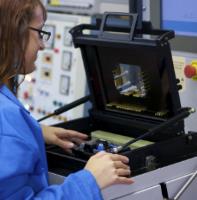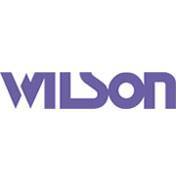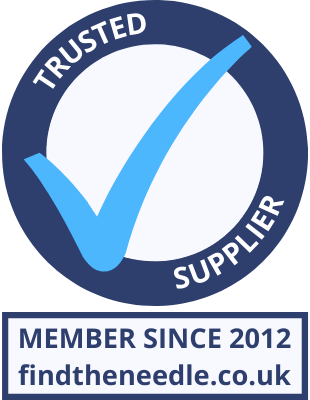 Add My Company
Add My Company
Sign In
Keeping the Supply Chain Up to Date
07-07-2018

By Nick Jones, Sales and Marketing Director, Wilson Process Systems Ltd
Studying the battles of any war can highlight the value of up to date information when making strategic decisions. In business, also, accurate information is vital to help OEMs find the best way to outsource assembly tasks.
A popular perception is that outsourcing means using offshore contractors, typically in locations where labour costs have been low. But that situation is changing quickly as Far-eastern economies expand, shipping costs increase, and markets demand greater responsiveness from OEMs. Today, it is vital to reassess established perceptions when deciding where to have new products built.
Over the past 10 to 15 years, western manufacturing has seen an apparently unstoppable outflowing of manufacturing contracts, particularly into China, as OEMs have taken advantage of very low labour rates to build new generations of products at more competitive prices. In response, domestic manufacturers have tended to adopt a business model targeting high-value, low-volume work. While arguments about the long-term implications for western manufacturing have continued, this model has become widely accepted. But changes at home and abroad now provide strong reasons to challenge the perception that manufacturing in volume means moving offshore.
Offshore and Domestic Changes
Wage costs in China have increased by 22%, on average, in the last year. The economy continues to expand, with growth of 9% forecast for 2012, and the likely impact of inflationary pressures into 2013 is difficult to predict. More dramatic effects may result from the changes happening throughout Far-Eastern societies. China has recently introduced a minimum wage, for example, and nearby countries such as India, Thailand and Vietnam are planning to follow suit.
Other costs are increasing, such as shipping, which is heavily influenced by rising oil prices and fuel duties. The cost of fuel will likely continue rising for the foreseeable future, driven by several factors such as environmental concerns as well as the increasing costs to locate and extract resources. In addition, volatility in the Middle East creates an ever-present threat of price increases.
Returning any manufacturing rejects for repair is also known to be difficult and in some cases is prohibitively expensive. Some OEMs say they expect to scrap anything up to around 30% of each shipment if repairs are not possible locally. As the cost per unit continues to rise, this level of waste can become unsustainable. This is an aspect of managing the supply chain that is often overlooked; the cost is difficult to calculate until it is incurred.
Payment terms, also, can be unfavourable; cash up front, before shipment, is normal. Hence the quantity of goods in transit at any one time can place a strain on finance. Customs tariffs are charged at the time of importation, adding an extra challenge to cash flow management.
In addition, the risks involved with manufacturing offshore remain appreciable. Among these, the theft of IP can become a real and significant cost. The Chinese government has implemented policies to prevent copying, but uncertainties surround whether these can be policed.
The situation at home is also changing, as western governments develop more effective policies allowing domestic companies to remain profitable and competitive. The UK government, for example, is introducing corporate tax reforms designed to enhance tax competitiveness and increase confidence to invest in the UK. Among new measures being proposed is the Patent Box, which should enable companies to draw greater benefits from their innovations and intellectual property at the same time as encouraging associated high-value jobs and activities to be located in the UK.
Overall, the relative cost of manufacturing offshore has been increasing for some time. More and more companies are rethinking their supply-chain strategies and successfully testing the UK CEM market for competitiveness. Several OEMs known for their sourcing offshore have made commitments to design, develop and build in the UK. Moreover, these products are made in the tens of thousands.
The Value of Flexibility
The world’s markets for electronics and high-tech manufacturing have a hard edge; assembly contracts are not awarded for patriotic or charitable reasons, but simply on the basis of achieving the best overall result. The UK is proving to be competitive, where automation can be introduced at NPI, while also delivering advantages such as much shorter lead-times, resulting in lower levels of inventory, as well as a crucial differentiator: flexibility.
Flexibility, in terms of accommodating evolution in product design and changes in delivery schedules, is now in the top three of OEMs’ supply-chain requirements. It has become a key element of the strategies OEMs now use to satisfy dynamic global markets. However, it remains an aspect that Far-Eastern CEMs are typically unable to address. Wilson Process Systems has focused on serving customers that require a high level of flexibility, since making a strategic decision in the late 1990s to concentrate on serving domestic clients rather than establishing an offshore manufacturing facility. Other advantages of this model include close monitoring of quality standards on an economic batch basis, greater security for IP, and the convenience of close communications without language and time-zone barriers.
Conclusion
The economics of high-tech manufacturing are changing continuously, and OEMs must keep abreast of the changes happening in offshore locations and closer to home, to ensure a competitive supply-chain strategy. As always, maintaining up-to-date information holds the key to deploying the right resources, at the right time, in the right place.
For more information on Keeping the Supply Chain Up to Date talk to Wilson Process Systems
Enquire Now
More Press Releases and Articles
List your company on FindTheNeedle.

